Final Exam Review PDF

| Title | Final Exam Review |
|---|---|
| Course | Virology |
| Institution | Brigham Young University |
| Pages | 14 |
| File Size | 301.7 KB |
| File Type | |
| Total Downloads | 3 |
| Total Views | 145 |
Summary
Study guide for final exam...
Description
Virology Final Exam Review Topic 38 Describe the important features of viruses in the family Rhabdoviridae; -
Bullet shaped, helical, enveloped, -ssRNA 99% mortality death if neurological
Explain the structure & composition of the virion; -
All viral proteins are structural–even polymerase Nucleocapsid surrounded by envelope and proteins. Nucleocapsid is flexible
Explain the components of the Rabies vaccine and why it can be administered after viral exposure; -
Post exposure prophylaxis o 4 inactivated virus injections (0, 3, 7, 14 days) o Human anti-rabies Antibodies shot as well. So you’re still protected o Why can it be administered after? Takes a while for the virus to get to the CNS. Rabies replicates very slowly. Moves slowly in muscle tissue PNS CNS
Explain the transcriptional strategy for gene expression and genome replication; -
-
-
(-) ssRNA and because of this is has one promoter and creates various intergenic signals that cause the polymerase to stutter (creating poly-A tail) then grabs back on 2 nucleotides later and transcribes the next gene a gradient of mRNAs are created Once enough M proteins are made, the L (with polymerasr) can ignore the intergenic signals and make a vcRNA that is immediately covered by the nucleocapsid. Synthesis of RNA and capping done by L (RDRP). (+) vcRNA is used as a template to make more genomes Gene sequence and transcription: separation of gene products by transcription, not by translation of polyproteins (which is a +ssRNA thing)
Describe the pathogenesis, diagnosis, and control of rabies; -
-
Pathogenesis: thru skin and replicates slowly and time to get to CNS depends on where you’re bitten. Aerosol transmission possible but unlikely Symptoms early on: pain, itchy, pins and needles at bite site, fever, malaise, headaches Neurological symptoms: difficulty swallowing, hallucinations, seizures, hydrophobia, coma, death Diagnosis: o Pre-death: isolate from saliva/brain, DFA from brain biopsy o Post-death: fluorescent Ab staining of fresh brain tissue (Negri bodies) o PCR of rabies RNA Control: o Vaccine for humans o Animal control Vaccinate pets
Vaccinate wild animals (raccoons) International quarantine laws Leash laws, pet licensing, removal of strays
Topic 29 Name the 2 polyomaviruses that cause encephalitis in humans, and describe the main features of PML; -
JC virus BK virus PML: progressive multifocal leukoencephalopathy o Demyelination in the brain o Rare in humans, but most common in immunocompromised people o Death in 1-9 months, headaches, aphasia, seizures, lesions in white matter, no cure
Explain why alphaherpesviruses have evolved to infect neurons; -
Neurons are immune-privileged areas where viruses can hide (low expression on MHC I) Neurons are accessible from the skin and easy to get into for viruses Neurons are SUPER long, so viruses have few opportunities to be recognized by antibodies
Draw a structure of a herpesvirus virion, and explain the functions of the different parts of the virion, with emphasis on the tegument which is unique to herpesviruses; -
-
DNA genome: encodes for all the genes Capsid: protects the genome from UV and drying out Tegument: provides ~20 proteins between nucleocapsid and envelope and they’re needed to replicate right away. A lot of immunoregulatory proteins, the polymerase is here. Envelope: helps the virus fuse with cell Surface glycoproteins: immune evasion, block complement, helps with fusion
Diagram the rolling circle mechanism of herpesvirus genome replication, and explain the context of how this prevents shortening of the genome without using the telomere system seen in eukaryotes; -
-
Herpes linear ds DNA but they don’t use telomeres. There are repeats at the end of linear genome, but upon entry the repeats recombine and the genome becomes circular. The outside strand is nicked and the inside strand serves as a template for polymerase Polymerase starts going around and around in circular making a long strand of genomes like unrolling a fruit roll-up. Polymerase creates the accompanying strand of DNA in long concatemers (lagging synthesis—RNA primer has been laid
-
down, the polymerase makes the strand in okazaki fragments, primers removed and ligase connects them all) Individual genomes are cut up (concatemer = many stands of individual genomes and these need to be cut up before packaged into viral particles)—Packaging: DNA is loaded into the capsid Linear end shortening problem: no problem, because it circularizes and then there are no ends
Write about the transmission and pathogenesis of these paramyxoviruses: mumps and measles (focus on SSPE); -
-
-
Mumps: swelling of salivary glands (humans are the natural host) o Respiratory transmission (also fomites), goes straight to parotid gland (saliva) and then the blood stream. Can also spread to other parts: ovaries, testes, brain o Can result in sterility in males, meningitis and encephalitis Measles: causes sspe. Very contagious! RO 12-18 o Forms syncytia, upper respiratory tract transmission so this is how it spreads, primary and secondary viremia, Koplik spots o Photophobia, pneumonia, encephalitis, blindness, otitis media (middle ear infection) SSPE = Sub-acute sclerosing panecephalitis o Persistent measles infection of the CNS Matrix protein expression is downregulated as a result of genome mutations; mutations required to develop SSPE Matrix needed for replication cycle, thus an abortive infection leads to persistence Affects 4-10 out of 100,000 patients Behavioral changes, cognitive decline, metal/motor deterioration o Death within 3 years
Write about the transmission and pathogenesis of these picornaviruses: polio virus, echovirus and coxsackievirus -
-
-
Picornaviruses: always fecal-oral transmission Polio: o Can infect brain cortex. Encephalopathic polio is fatal. Or bulbar polio affects the brainstem and causes loss of autonomic function (like breathing) Echovirus (Enteric Cytopathic Human Orphan Virus) o 28 viral types o A common cause of diarrhea, aseptic meningitis (photophobia, stiff beck, etc) Coxsackievirus o Similar symptoms to polio, also causes aseptic meningitis o No vaccine available
Topic 30 Describe why mosquitoes are efficient vectors for transmission of viruses to humans and how Alphaviruses overwinter;
-
Many different species of mosquitos—thus they can survive in a lot of areas/environments, can travel very far They replicate the virus to a really high titer of viral load in blood Overwinter: mosquitos can hibernate, female birds can pass the virus through eggs, birds can be infected and migrate to other hemispheres where they can infect other mosquitos
Describe and distinguish between simple and complex mosquito vectored transmission and be able to differentiate between enzootic and epizootic vectors -
Simple transmission: mosquito bites and human and gets infected. Then that mosquito goes and bites another person and they get infected. Complex transmission: diseases in nature, vector picks up virus from a bird, and then bites and infects a human Enzootic vector: it is maintained in nature and doesn’t cross over to infect humans Epizootic: viruses maintained in nature and then jumps over to humans
Describe how West Nile Virus spread across the U.S. and know the role played by epizootic hosts; -
In 1999 first came to the US via a bird or mosquito. In New York and then spread west Rapid spread because birds amplify virus and travel long distances. Bird Mosquito human
Describe symptoms of viral encephalitis in humans; -
Stiff neck, headache, hydrophobia, paralysis, death, coma
List 2 Bunyaviruses, 3 alphaviruses (Togaviridae) and 3 flaviviruses (Flaviviridae) that cause encephalitis in humans; -
-
-
Bunyaviruses: o La Crosse o California Encephalitis Virus Alphaviruses: o Eastern Equine Encephalitis –EEE o Western Equine Encephalitis—WEE o Venezuelan Equine Encephalitis—VEE Flavivirus o West Nile Virus o St. Louis Encephalitis o Japanese Encephalitis
Be conversant about why mosquito-transmitted viral infections are a common cause of encephalitis. -
Mosquitos infect you via the blood. The BBB typically keeps things out but viruses that infect mosquitos like to infect macrophages/monocytes. Macrophages can be recruited to the brain and so the virus can get into brain, replicate, and then infect other cells leading to encephalitis
Topic 31 Illustrate and explain the process of translation and separation of the poliovirus gene products, and where the protease activity originates; -
+ SSRNA with all genes needed for replication. 2 A represents the protease and its in the middle and then cleaves itself from the middle of the polypeptide and then can cut up all the other proteins. 1. Poliovirus enter cell as +ssRNA and is transcribed by ribosomes starting at IRES. 2. The polypeptide strand includes all viral proteins 3. Self-cleavage allows protease to cut itself out and then cleave all the other proteins
Explain why positive-sense RNA viruses need helicases and why minus-sense RNA viruses do not need them; -
+ ssRNA get all wound up and the genome base pairs with itself all the time making tangles (-) ssRNA viruses always are surrounded by helical nucleocapsids, so the nucleotides don’t base pair with eachother and it doesn’t have to be unwound by helicase
Diagram the various types of RNA molecules present in poliovirus infected cells and their purposes; -
Polioviruses are + ssRNA viruses 1. Upon entry your genome is released 2. Next make the antigenome complimentary strand 3. The – sense genome is then made into a lot of + sense genomes by polymerases, all are full length. Two GENOMES ARE PRESENT: genome + SENSE AND antigenome – SENSE. The + sense genome has three purposes: 1. Translated to make all the proteins you need. 2. Transcribed to make the antigenome 3. Or it can encapsidated: loaded into new capsid to leave the cell and to infect a new cell.
Write about the transmission and pathogenesis of poliovirus, with a focus on movement of the virus through humans and main sites where virus replication causes disease; -
Transmission: fecal and/or oral, inhalation Virus goes to GI tract and multiplies (or replicates in oropharyngeal mucus) From mucus membranes it moves into the bloodstream Sometimes goes to CNS (nerve ganglia) Can replicate in spinal cord, or in nerve cells and kills them (causing muscle atrophy due to paralysis)
Write about poliovirus vaccines (and their history, including what is approved for use today in the USA and in other countries) and diagnosis; -
Salk Vaccine: the original vaccine
-
-
o Inactivated, 3 injections o It is the current US vaccine of choice Sabin Vaccine: a few years after o Live, attenuated o 3 serotypes included in a live attenuated vaccine o Good, but low rates of reversion to wild-type strain leading to paralytic polio o Used from 1961-2000 o Much cheaper, so a lot of countries use it. Diagnosis: PCR, ELISA, direct test of fecal matter, etc. just the normal ways
Discuss current efforts and success in eradicating polio worldwide. -
We are very close to eradication Currently, the only existing cases came from the Sabin vaccine We are trying to get every country to switch back to Salk so we can eradicate it.
Contrast polio to smallpox which was successfully eradicated; -
Last smallpox case was in Somalia in 1977 1. No non-human reservoir—so if we just took care of people, the virus would be gone. (Although monkeys can be infected in lab with massive doses) BOTH VIRUSES 2. No latency, carrier, or persistent state BOTH VIRUSES 3. Easily diagnosed EASIER FOR SMALLPOX THAN POLIO 4. An effective vaccine was available BOTH VIRUSES 5. Virus did not mutate to form multiple strains POLIO HAS 3 STRAINS (but 3 really isn’t that many so we can still keep up with it in our vaccinations—not like the flu). 6. The disease does not have a long incubation time BOTH VIRUSES 7. Immunity is long-lasting (by infection or vaccination) BOTH VIRUSES 8. There was a social and political will BOTH VIRUSES 9. Polio is non-enveloped and quite stable in contaminated water; smallpox is enveloped and not very stable. This makes POLIO HARDER TO ELIMINATE.
Discuss post-polio syndrome and potential explanations for how this disease is caused; -
-
A complication that arises 30-40 years post-infection—No virus shed despite the paralysis Happens in 25-40% of people who had polio Symptoms: o New muscle pain, weakness, paralysis, further degeneration of motor neurons o Risk factors: increasing time since acute infection, female Explanations: o Neurons overtaxed as they compensate for the others that were killed in initial infection??
Know that West Nile Encephalitis virus has recently become another important cause of human paralysis in the United States (also, AFM due to enteroviruses is a recent development). -
Ratio of asymptomatic : fever : meningitis/encephalitis == 110:30:1
-
In the US there have been over 24,000 cases and about 1,000 deaths o Complications: Parkinson’s-like symptoms, flaccid paralysis, asymmetric weakness AFM: acute flaccid myelitis o Recent outbreak in children, causes paralysis. o CDC reports that enteroviruses are the cause.
Topic 32 Describe the features of viruses in the family Filoviridae, including the very long virions; -
Long, filamentous virions: can get up to the same length as a eukaryotic cell Virus family includes ebola (-) ssRNA thus helical nucleocapsids
Explain the structure of the Filovirus particle and genome; -
Intergenic signals separating all the genes The virion is really long Has glycoproteins on the outside
Explain how pathogenicity differs from virus to virus and outbreak to outbreak and how Reston Ebola differs from other Ebola viruses; -
Each strain has different ability to spread and kill. Dependent on mutations affecting protein potency. Marburg: 83.7% mortality. Sudan: 53.2% Zaire: 73.1% Reston: 0%--not infectious in humans. Came from monkeys in the Philippines. Some people became seroconverted, but no on became ill. Poorly understood why (but pathogenicity is affected by genetics, health level of the host (malnourished people in Africa), low genetic diversity (such as small villages in Africa, limited MHC variation)
Describe how Ebola virus persists in nature; -
Natural reservoir is bats and it persist even when there is no human spread Low virulence, low mortality in bats
Describe the transmission, pathogenesis (including immune-mediated effects and toxicity of the viral glycoproteins), diagnosis, and control of Ebola Hemorrhagic Fever -
-
Transmission: contact with infected bodily fluids; blood, saliva, sexual excrement Pathogenesis: targets macrophages, attacks endothelial cells of veins hemorrhaging, glycoproteins are toxic causing cells to die and makes the cells to not bind together making blood vascular leakage and edema. Excessive clotting and depletion of clotting factors. Destruction of liver and kidney. 2-21 day incubation period Rapid onset of symptoms
Fever, headache, joint/muscle aches, sore throat, weakness, vomiting, diarrhea, rash, red eyes, internal/external bleeding Immune-mediated Effects: o Cytokine storm: macrophages release large amounts of cytokines when infected (leads to higher vascular permeabilization) Cytokines also control cell death, so there are a lot of cells that die from high concentration of cytokines o Coagulation induced by factors released by infected cells. Infected cells release clotting factors making the blood clot. o Depletion of clotting factors leads to prolonged bleeding o Antibody-dependent enhancement of infection o Can use the Fc regions of antibodies and complement receptors to get into macrophages. Because macrophage will eat antibodies attached to pathogen Control: a new vaccine against Ebola Zaire (97.5% effective) But causes severe side effects because the vaccine injects the glycoprotein into you and to glycoprotein is cytotoxic = Ring vaccination. 50% of patients experience these side effects Treatment: o Several experimental treatments are in development (monoclonal antibodies) o Right now, mostly just supportive therapy (balance fluids/electrolytes, maintain oxygen status and blood pressure) o
-
-
Topic 33 Describe why dengue virus infections and disease are rapidly increasing; -
Urban mosquitos are the ones that carry Dengue virus—as populations move from rural to urban areas, it becomes more common. No longer geographically limited—boat, airplane travel (WWII). Was limited to islands before WWII. Disease: serotypes are also spreading so there is more chance for secondary infection. You could come into contact will all kinds of serotypes and then get sick from different ones than the one you were exposed to.
Describe how antibody-dependent enhancement of dengue infection occurs and how this complicates dengue vaccine development. -
In a primary infection (the first infection), neutralizing Abs are made against the serotype of infection Abs against different serotypes are not cross-neutralizing Macrophages preferentially phagocytose things that are “opsonized” with Ab, so they miss the new pathogens Virus can infect cells much better during secondary infection and cause more severe disease Vaccine complications: o A vaccine will only give neutralizing Ab against one or two serotypes, so if the person was exposed to a different serotype, you’ll probably get a severe case and be AT A HIGHER RISK FOR DISEASE
Write about the 2 Bunyaviruses that cause hemorrhagic fever in humans, including how we get infected and animals that are natural hosts; -
-
Rift Valley Fever—Eastern Africa o Reservoir: wild ungulates (hoofed mammal) and domestic sheep/cattle as well o Vector: aedes and culex mosquitos o Fever: headache, photophobia, fever, liver problems, meningoencephalitis, HF o Mostly in livestock, not as commonly spread to humans Crimean-Congo Hemorrhagic Fever—Central Asia, Sub-Saharan Africa, China, Eastern Europe o Reservoir: sheep, goats, cattle, camels o Vector: ticks, contaminated blood o Symptoms: fever, headache, back/abdominal pain, hemorrhagic skin rash, pulmonary edema
Explain the genome composition of Arenaviruses and the theory of how they could have arisen from recombination of Hantavirus; -
Arenaviruses have S gene that is “ambisense” and encodes for multiple proteins. Arenaviruses have two segments and Hantaviruses have 3 segments Perhaps S and M genes of Hantavirus fused together and created the S gene in Arenavirus Could have happened if recombination of one + vcRNA and one (-) genome RNA of the Hantavirus occurred if they infected a cell at the same time, making the ambisense S gene.
Explain the pathogenesis of Lassa fever and new world hemorrhagic fever viruses, including how humans get exposed. -
-
Pathogenesis: o Transmission: inhalation of rodent feces or human to human transmission o Respiratory phase: enters URT, 1-2 weeks of fever, sore throat, headache o Systemic phase: flushing, edema, petechial rash, mouth lesions, shock (capillary leakage) o Neurologic phase: coma, death New World Hemorrhagic Fever Viruses: o Argentine HF (Junin) Virus, Bolivian HD (Machupo) Virus Exposure: o Rodents o Viru...
Similar Free PDFs

Chem Final Exam Review
- 12 Pages

Final Exam - Review notes
- 92 Pages

Bio Final Exam Review
- 2 Pages

Final EXAM Review booklet
- 5 Pages
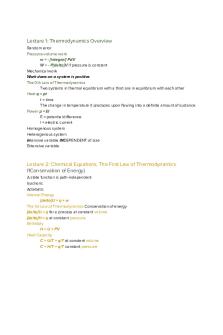
CHEM303 final exam review
- 4 Pages

Psychology Final Exam - Review
- 13 Pages
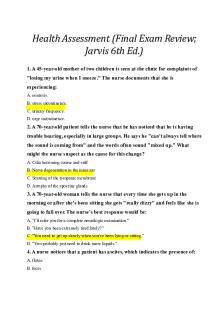
Jarvis Final Exam Review
- 12 Pages
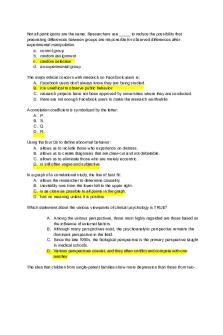
Final exam review
- 96 Pages
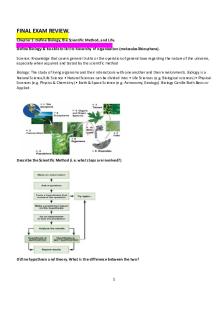
Final Exam Review
- 48 Pages
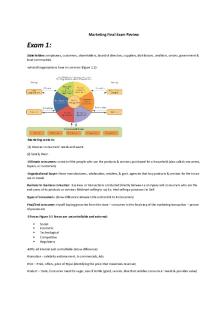
Marketing Final Exam Review
- 15 Pages
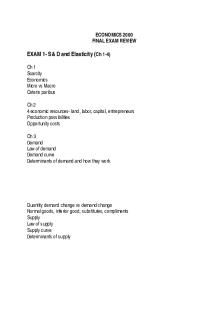
Final exam review
- 8 Pages
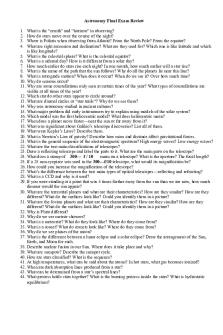
Astronomy Final Exam Review
- 2 Pages
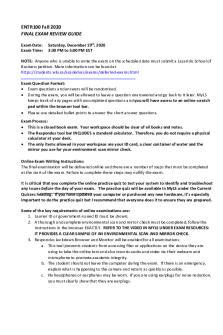
Final Exam Review Guide
- 4 Pages

Final exam review flsp4420
- 5 Pages

Theo Final Exam Review
- 16 Pages

Entrepreneurship final exam review
- 33 Pages
Popular Institutions
- Tinajero National High School - Annex
- Politeknik Caltex Riau
- Yokohama City University
- SGT University
- University of Al-Qadisiyah
- Divine Word College of Vigan
- Techniek College Rotterdam
- Universidade de Santiago
- Universiti Teknologi MARA Cawangan Johor Kampus Pasir Gudang
- Poltekkes Kemenkes Yogyakarta
- Baguio City National High School
- Colegio san marcos
- preparatoria uno
- Centro de Bachillerato Tecnológico Industrial y de Servicios No. 107
- Dalian Maritime University
- Quang Trung Secondary School
- Colegio Tecnológico en Informática
- Corporación Regional de Educación Superior
- Grupo CEDVA
- Dar Al Uloom University
- Centro de Estudios Preuniversitarios de la Universidad Nacional de Ingeniería
- 上智大学
- Aakash International School, Nuna Majara
- San Felipe Neri Catholic School
- Kang Chiao International School - New Taipei City
- Misamis Occidental National High School
- Institución Educativa Escuela Normal Juan Ladrilleros
- Kolehiyo ng Pantukan
- Batanes State College
- Instituto Continental
- Sekolah Menengah Kejuruan Kesehatan Kaltara (Tarakan)
- Colegio de La Inmaculada Concepcion - Cebu